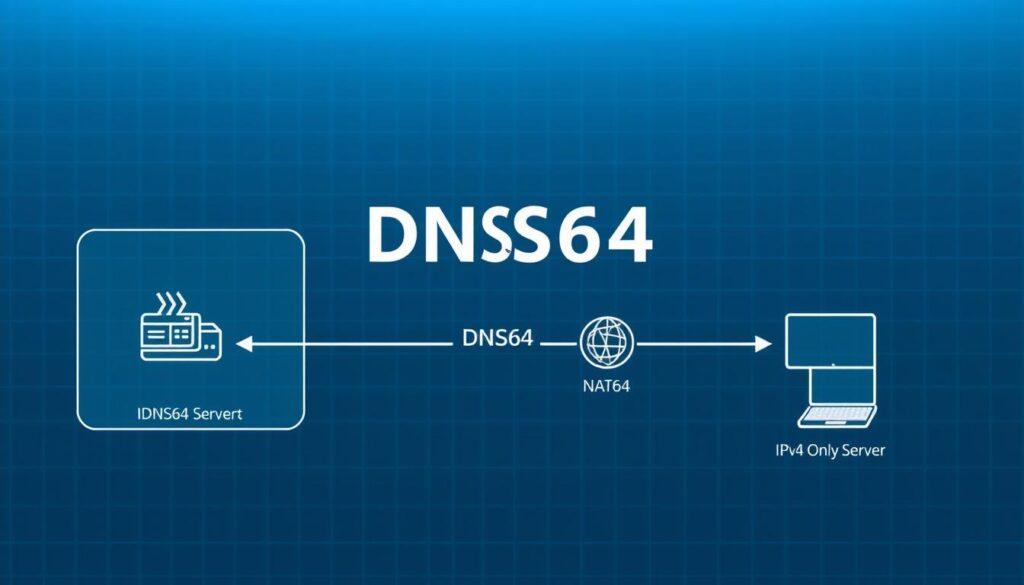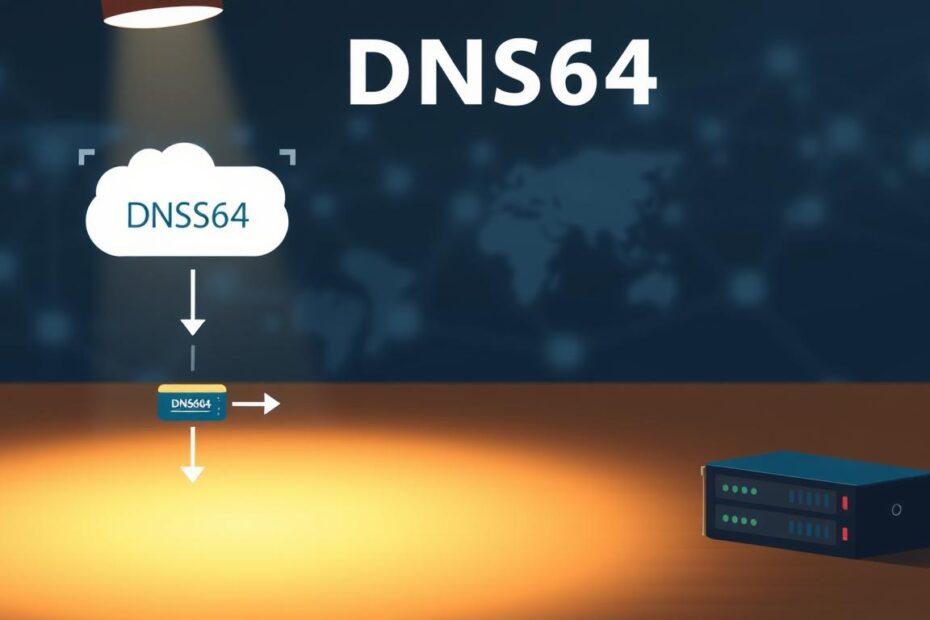The world is moving towards IPv6, and DNS64 is key. Steve Jobs said, “Innovation distinguishes between a leader and a follower.” DNS64 is a leader in helping us move from IPv4 to IPv6 smoothly.
DNS64 is a vital tool for talking between IPv6 and IPv4 networks. It changes IPv4 addresses into IPv6 ones. This lets devices on different networks talk to each other easily.
You’ll learn more about DNS64 and why it’s important today. It’s essential for companies wanting to use IPv6.
Website links that support DNS64
Google Link https://developers.google.com/speed/public-dns/docs/dns64
Cloudflare Link https://developers.cloudflare.com/1.1.1.1/infrastructure/ipv6-networks/
Key Takeaways
- DNS64 is a crucial technology for transitioning from IPv4 to IPv6.
- It enables communication between IPv6 and IPv4 networks.
- DNS64 translates IPv4 addresses into IPv6 addresses.
- This technology is vital for organisations upgrading their infrastructure.
- DNS64 facilitates seamless communication between devices on different networks.
What is DNS64 and Why It Matters
DNS64 is a key player in the move from IPv4 to IPv6. It helps networks talk to each other smoothly, even when using different protocols. This is crucial as networks grow and change.
The Definition and Purpose of DNS64
DNS64 lets IPv6 networks talk to IPv4 servers. It makes it possible for IPv6 clients to reach IPv4 resources. The main goal of DNS64 is to make sure IPv6 networks can still use IPv4 resources.
The Role of DNS64 in IPv4 to IPv6 Transition
The shift from IPv4 to IPv6 is complex, and DNS64 is essential. It lets IPv6 devices talk to IPv4 ones. This bridges the gap between the two protocols.
Networking experts say, “DNS64 is key for companies moving to IPv6 but still needing to use IPv4.”
How DNS64 Works: The Technical Breakdown
To understand DNS64, let’s look at how it works. It’s key in moving from IPv4 to IPv6. It helps networks with only IPv6 talk to servers using IPv4.
The DNS64 Protocol Explained
The DNS64 protocol is an update to the DNS. It turns IPv4 addresses into IPv6 addresses. It does this by adding a special IPv6 prefix to the IPv4 address. This makes a synthetic IPv6 address.
This trick lets IPv6-only clients reach IPv4 resources.
DNS64 vs NAT64: Understanding the Difference
DNS64 and NAT64 are often talked about together. But they do different things. DNS64 makes IPv6 addresses from IPv4 ones. On the other hand, NAT64 changes IPv6 packets into IPv4 and vice versa.
- DNS64 works at the DNS level, making addresses.
- NAT64 works at the network layer, translating packets.
How These Technologies Work Together
DNS64 and NAT64 work together for IPv6 and IPv4 networks. When an IPv6-only client wants to access a resource, DNS64 makes an IPv6 address. Then, NAT64 changes the IPv6 packets to IPv4. This lets the client reach IPv4 resources.

Common Issues and Their Solutions
Some common problems are wrong DNS64 prefixes and NAT64 integration issues. To fix these, check your settings against the software guide. Also, make sure your NAT64 and DNS64 are set up right together.
Conclusion: Benefits and Limitations of DNS64
DNS64 is key in moving from IPv4 to IPv6. It helps networks with only IPv6 to talk to IPv4 servers. Knowing its good points and downsides is crucial.
DNS64 makes the switch to IPv6 easier by letting IPv6-only devices reach IPv4 sites. But, it might cause problems with some apps. You also need to set it up carefully to avoid issues.
Thinking about these points helps you decide if DNS64 fits your network. With the right planning, DNS64 can be a big help in your IPv6 journey. It makes the move smoother and more efficient.
